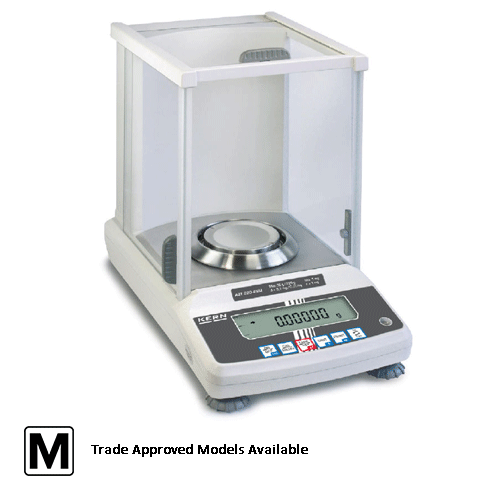Introduction:
In the dynamic landscape of scientific research, pharmaceuticals, and quality control, the pursuit of precision remains an unyielding constant. At the heart of this pursuit lie analytical balances, sophisticated instruments meticulously crafted to deliver unparalleled accuracy in the realm of mass measurement. This comprehensive guide aims to navigate the intricate world of analytical balances, shedding light on their nuanced features, diverse applications, and the pivotal role they play across various industries.
What Are Analytical Balances?
Analytical balances, the unsung heroes of laboratories and industrial settings, are precision instruments designed with the singular purpose of providing accurate measurements of mass. Unlike their conventional counterparts, analytical balances are distinguished by their heightened sensitivity and exactitude, making them indispensable where minute measurements are not just preferred but are, in fact, imperative. Found predominantly in laboratories, research facilities, and industries where precision is paramount, these instruments are the linchpin of experimentation, quality assurance, and compliance.

Key Features of Analytical Balances:
- High Sensitivity: The defining characteristic of analytical balances lies in their ability to discern even the most minuscule changes in mass. With sensitivity levels that can extend to micrograms, these balances serve as the vanguard of accuracy, ensuring that measurements are not just reliable but also reflective of the true nature of the substances being weighed.
- Internal Calibration: In the pursuit of seamless precision, many modern analytical balances come equipped with internal calibration features. This innovative functionality allows users to recalibrate the balance without the need for external weights, ensuring a consistent level of accuracy throughout the course of numerous weighings.
- Draft Shields: Precision is easily compromised by external factors such as air currents. To counter this, analytical balances often come equipped with draft shields, creating a controlled environment around the weighing pan. This not only mitigates the impact of external influences but also enhances precision by minimizing disturbances during the weighing process.
- Digital Readouts: The transition from analog to digital readouts has been transformative in the world of analytical balances. The clear and easily decipherable digital displays not only provide accurate measurements but also contribute to user convenience. Advanced models may even feature touchscreen interfaces and customizable settings, elevating the user experience.

Applications of Analytical Balances:
- Laboratory Research: In the dynamic realm of scientific research, where breakthroughs hinge on the minutest of details, analytical balances become the unsung heroes. Researchers rely on these instruments to measure reagents, compounds, and other substances with a level of precision that is paramount for the success of experiments and studies.
- Pharmaceutical Industry: The pharmaceutical sector operates on the premise that precision in formulation translates directly to the efficacy of medications. Analytical balances play a crucial role in ensuring the correct proportions of ingredients, contributing significantly to the quality and reliability of pharmaceutical products.
- Quality Control: Industries involved in manufacturing and production understand the pivotal role that analytical balances play in maintaining stringent quality control. Whether it’s ensuring the right mix of materials in the production line or conducting meticulous quality checks on final products, these balances guarantee adherence to specifications and standards.
- Environmental Analysis: In the ever-growing concern for the environment, analytical balances find applications in environmental analysis. These instruments are instrumental in providing precise measurements of samples such as soil, water, and air pollutants. Such meticulous measurements contribute significantly to monitoring environmental conditions and assessing the impact of human activities on ecosystems.
Choosing the Right Analytical Balance:
Selecting the right analytical balance demands a judicious consideration of specific factors tailored to meet the unique requirements of your application. Here are some key considerations:
- Capacity and Readability: Tailor your choice based on the maximum weight the balance needs to handle and the level of precision required. Balances with higher capacities and finer readability are well-suited for applications demanding extreme accuracy.
- Calibration Method: Choose between balances with external calibration or those equipped with internal calibration features. The latter offers the advantage of convenient and quick calibration without the need for external weights.
- Draft Shield Design: The effectiveness of the draft shield is pivotal. A well-designed shield should provide optimal protection against air currents and external influences, ensuring accurate and reproducible results.
- User Interface: Consider the user interface features, such as touchscreen controls, customizable settings, and data output options. A user-friendly interface enhances the overall experience and efficiency of the weighing process.

Conclusion:
In the tapestry of scientific advancements and industrial progress, analytical balances stand as silent sentinels of precision. Their role in ensuring accurate and repeatable measurements cannot be overstated. Whether in a laboratory setting, pharmaceutical production, or environmental analysis, these instruments are the bedrock upon which reliable data is built. Understanding the key features and applications of analytical balances is not just a necessity; it is a strategic investment in the pursuit of precision. As you embark on this journey, explore the world of analytical balances with discernment and foresight, and usher in a future where accuracy is not just a goal but a guaranteed outcome.
For those seeking more information on analytical balances and a curated selection of high-quality precision instruments, visit Scales and Balances. Elevate your precision – explore, choose, and redefine the parameters of accuracy with analytical balances that deliver beyond expectations.
